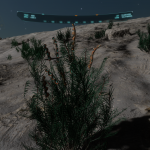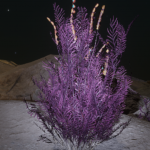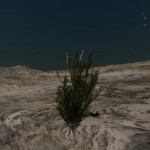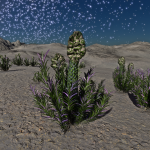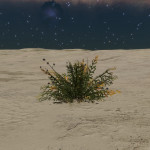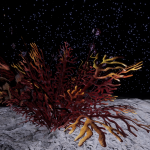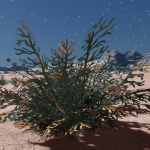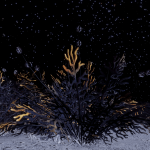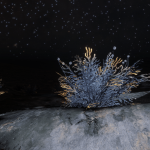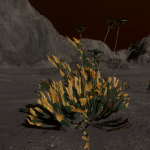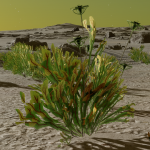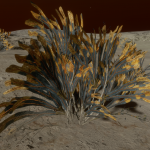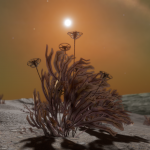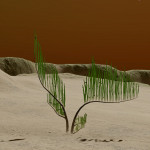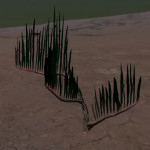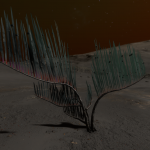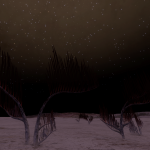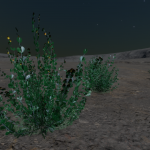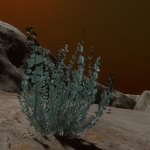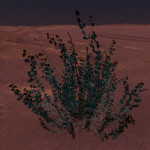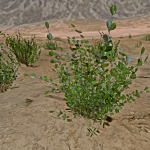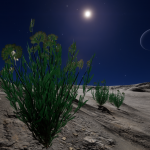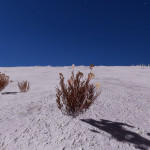Frutexa genus
Description
Robust woody plants with deep rooting structures to gather liquids and hold themselves in place where the ground may be unstable. They are photosynthetic organisms with specialised photoreceptors that work even in low light conditions. As such they are highly successful, and are widespread and diverse in nature. Their small leaf structures protect them against extremely low temperatures and liquid loss in higher temperatures.
Minimum distance between two genetic samples: 150 m
Conditions of occurrence
- Planets with thin atmosphere
- Rocky or High Metal Content (for Frutexa metallicum) planets
- Maximum gravity: 0.27
| Atmosphere type | Species |
|---|---|
| Ammonia | Frutexa Flabellum (Rocky) Frutexa Flammasis (Rocky) Frutexa Metallicum (HMC) |
| Carbon dioxide Carbon dioxide rich < 195 K | Frutexa Acus (Rocky) Frutexa Fera (Rocky) Frutexa Metallicum (HMC) |
| Water, Water-rich | Frutexa Sponsae (Rocky) |
| Sulfur Dioxide | Frutexa Collum (Rocky) |
Colored variants
Colored variant determined by the parent star type:
| Star type | Color |
|---|---|
| O | |
| B | Lime |
| A | |
| F | Green |
| G | Emerald |
| K | |
| M | Grey |
| L | Teal |
| T | |
| TTS | Mauve |
| Y | |
| W | |
| D | Indigo |
| N | Red |
Frutexa acus
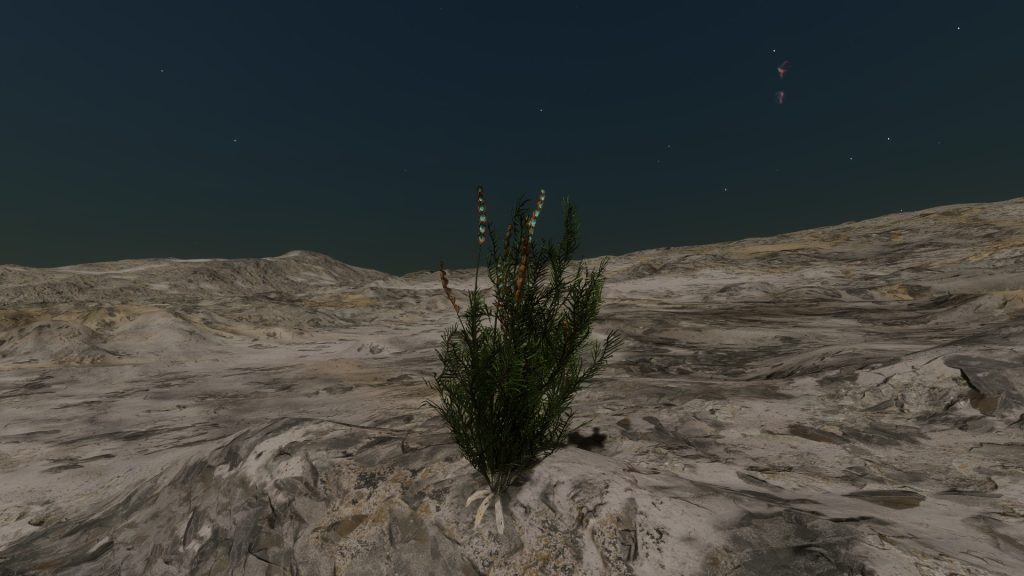
Description
This frutexa species has vivid colouration when young that alters as it matures, its upper branches produce lines of small pea-like seed pods.
Conditions of occurrence
- Planets with thin Carbon dioxide atmosphere
- Rocky planets
- Maximum gravity: 0.27
- Mean temperature inferior to 195 K
Colored variants
Colored variant determined by the parent star type (see above, genus Frutexa)
Frutexa collum
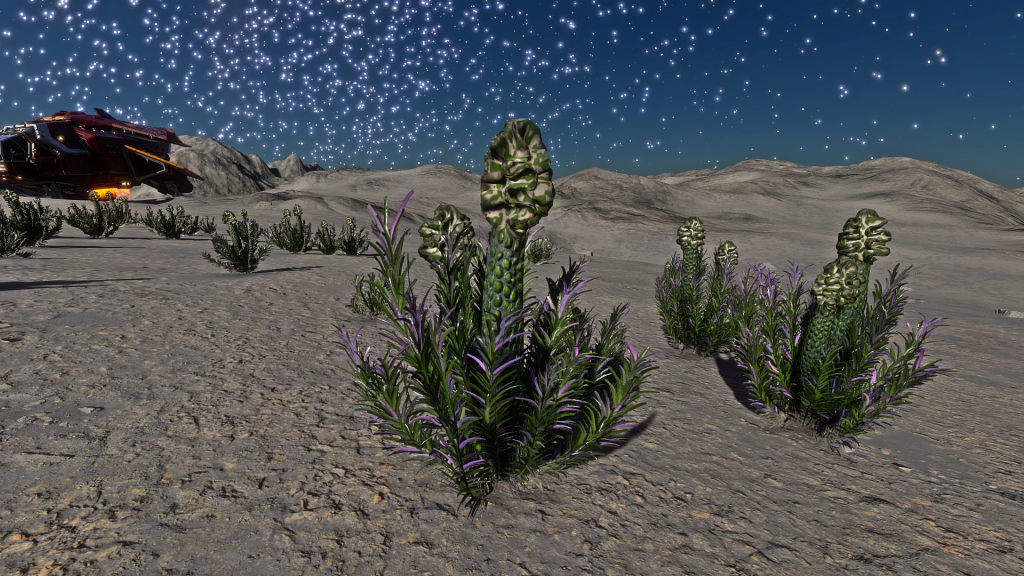
Description
A species of frutexa characterised by its spiky lower branches surrounding a thick central column, which is clotted with spores and with a dark crown.
Conditions of occurrence
- Planets with thin Sulphur dioxide atmosphere
- Rocky planets
- Maximum gravity: 0.27
Colored variants
Colored variant determined by the parent star type (see above, genus Frutexa)
Frutexa fera
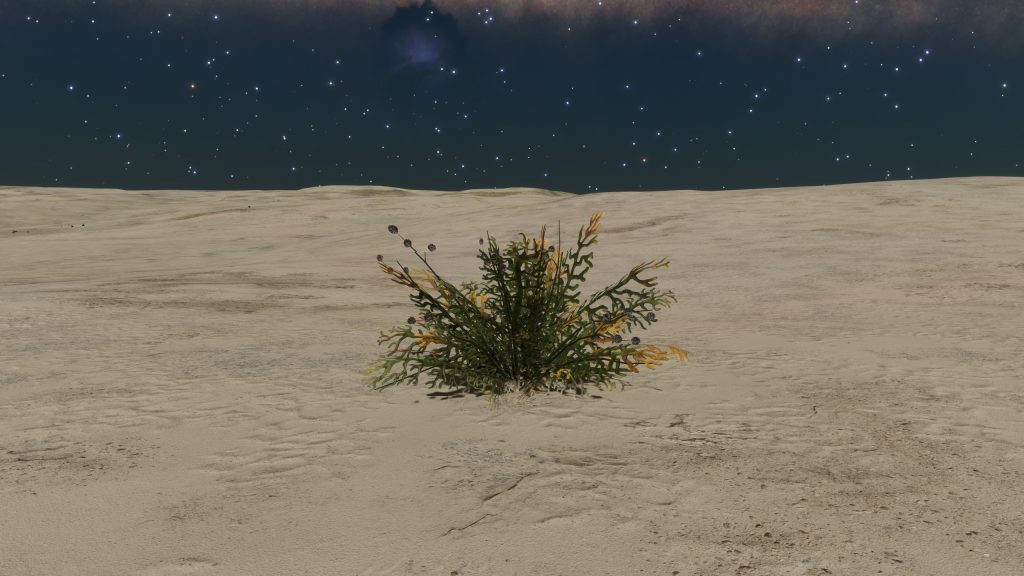
Description
This species of frutexa combines broad branches with long thin stalks, along which grow clusters of lightweight seed pods that are scaitered by light winds.
Conditions of occurrence
- Planets with thin Carbon dioxide atmosphere
- Rocky planets
- Maximum gravity: 0.27
- Mean temperature inferior to 195 K
Colored variants
Colored variant determined by the parent star type (see above, genus Frutexa)
Frutexa flabellum
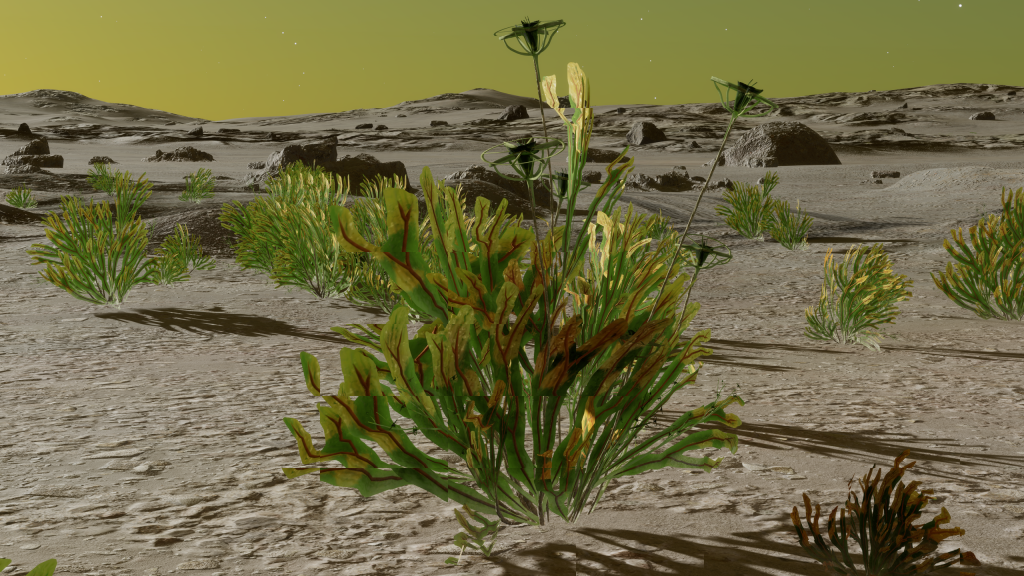
Description
A species of frutexa that appears as a bush of leaves with a similar texture to seaweed. Seeds are extended on long stalks and protected by a cage formation until ready to germinate.
Conditions of occurrence
- Planets with thin Ammonia atmosphere
- Rocky planets
- Maximum gravity: 0.27
Colored variants
Colored variant determined by the parent star type (see above, genus Frutexa)
Frutexa flammasis
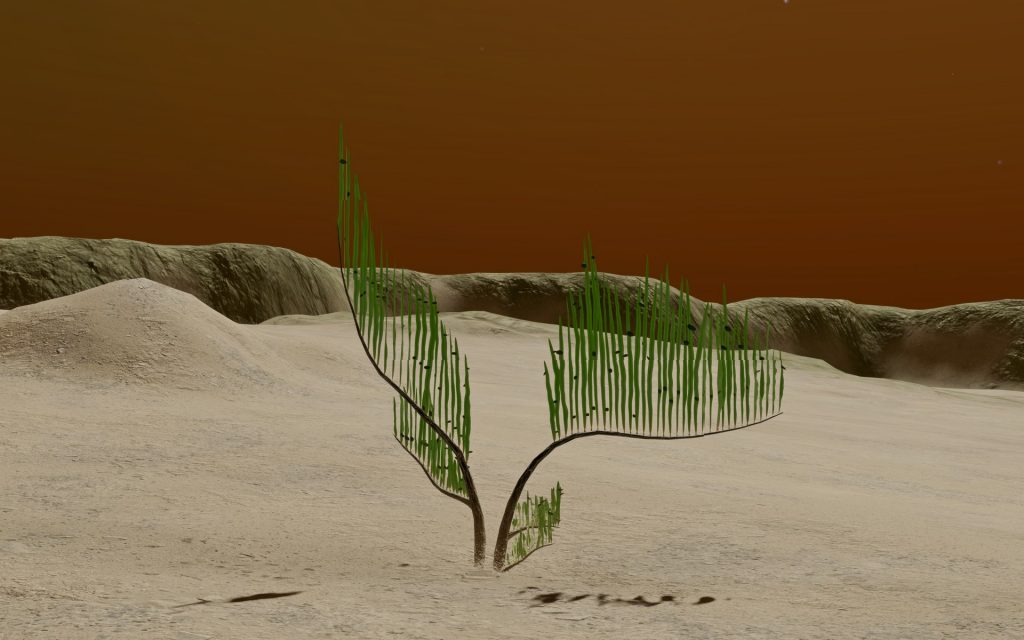
Description
A frutexa species that gives the appearance of flames, with vivid upright fronds extended from multiple stalks. The fronds are dotted with disc-sha ped spores that are distributed by the wind.
Conditions of occurrence
- Planets with thin Ammonia atmosphere
- Rocky planets
- Maximum gravity: 0.27
Colored variants
Colored variant determined by the parent star type (see above, genus Frutexa)
Frutexa metallicum
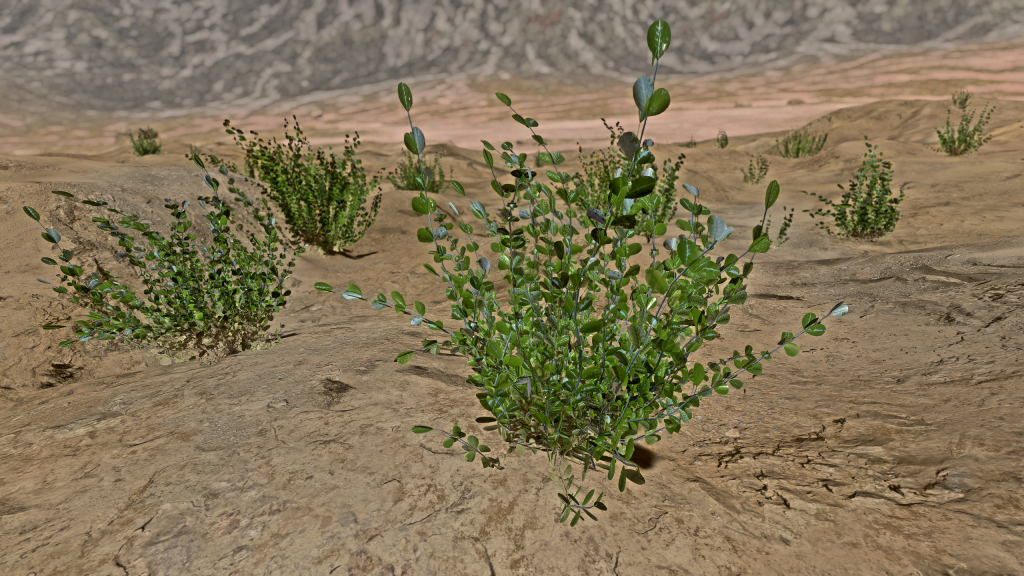
Description
This species of frutexa has an almost metallic shine to its small leaves. Along its upper branches grow spherical spores, which each have a star-shaped opening to increase germination.
Conditions of occurrence
- Planets with thin Carbon dioxide or Ammonia atmosphere
- High Metal Content planets
- For Carbon dioxide atmosperes, mean temperature inferior to 195 K
- Maximum gravity: 0.27
Colored variants
Colored variant determined by the parent star type (see above, genus Frutexa)
Frutexa sponsae
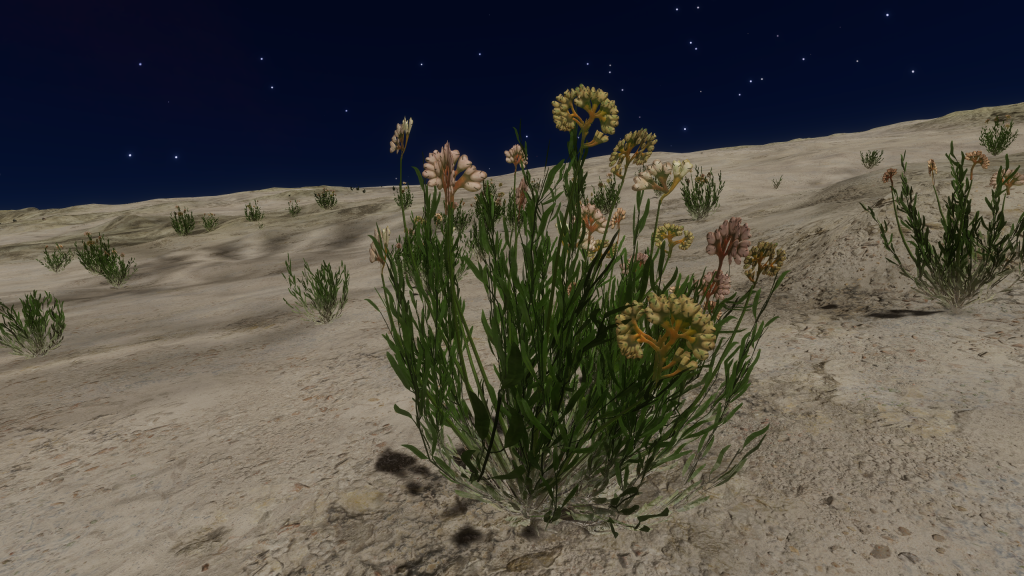
Description
A frutexa species that produces clusters of upright intertwining branches, which are crowned with bright seed sacks.
Conditions of occurrence
- Planets with thin Water atmosphere
- Rocky planets
- Maximum gravity: 0.27
Colored variants
Colored variant determined by the parent star type (see above, genus Frutexa)
